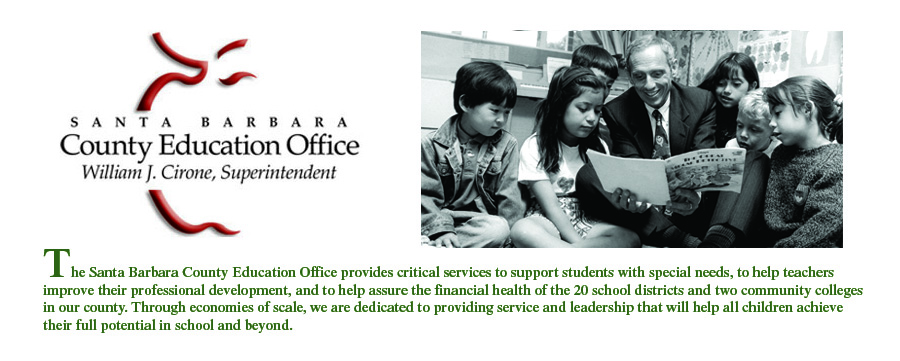By Bill Cirone, Santa Barbara County Superintendent of Schools
With constant, around-the-clock coverage
of the awful events that unfolded in Orlando last weekend, it is not unusual
for children to show signs of stress. Stress is the reaction of our minds and
bodies to unsettling experiences. Too much stress can have negative
consequences and can even make us ill. For this reason, the things that cause
stress in children should be taken seriously before they are able to cause
harm.
What are the signs of a distressed child?
Anger, aggressiveness, anxiety, crankiness, bedwetting, crying too easily,
overeating, increased clumsiness, hair twisting, teeth clenching, fighting with
other children, or withdrawing from them, or failing at school, are all on the
list.
Causes of stress can lurk anywhere:
Pressure from home or school; being too busy with over-loaded schedules; family
changes such as divorce or remarriage; feeling unloved or misunderstood;
unsettling events elsewhere in the world can also trigger stress in children.
It’s important to remember that children
cannot analyze and control stress-causing events as well as adults can. They
need guidance from adults.
Family support is a vital antidote to
stress, so be sure to relax and talk together. Curb access to violent TV shows
and movies. Keep daily life calm. Pets are often a good buffer and an emotional
refuge. Relaxed parents, who cope positively with their own stress, pass on
these skills to children.
It also helps to maintain a network of
friends and activities outside the home. The support and acceptance plays a
very helpful role.
Children also cope better with stress in
their lives when they don’t feel helpless. So teach them how to care for
themselves and take on family responsibilities as they grow. Show them to
balance chores and play. Help them plan schedules that are tenable. Show them
the importance of adequate rest and proper nutrition. All these precautions
help prevent stress from erupting in the first place.
Encourage your children to ask for help
when they need it, analyze their problems as they arise, and plan their
alternatives for coping.
It’s been demonstrated that children who
enjoy learning have good defenses against stress, so encourage your children to
keep their minds sharp, even while school is out for the summer. But remember
that too much academic pressure is a chief cause of childhood stress, so don’t
go overboard.
If your child is having persistent
problems handling stress, don’t hesitate to contact a professional for help.
These professionals are trained at mixing coping skills like group discussions,
role-playing, films, and problem-solving exercises. There’s an old adage: “If
you see something, say something.” It is as important that we abide by that
maxim—both at home and in the school or workplace.
